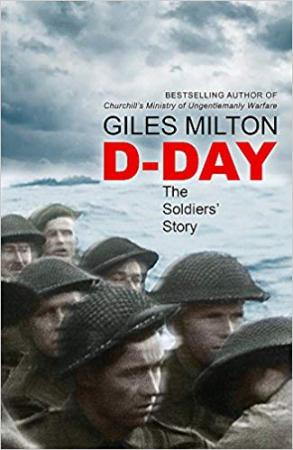Commemorations of the Allied D-Day landings have begun in Europe, where veterans of the invasion are gathering along with world leaders to mark the 75th anniversary of the operation to liberate France.
D-Day started shortly after midnight June 6th, 1944 with an extensive air and naval bombardment and an airborne assault on the French coast. 24.000 British, Canadian and American paratroopers were dropped behind the 80 kilometer wide beach zone and seized key objectives such as bridges and road crossings. Their objectives were not always reached but they prevented the enemy organizing and launching counter-attacks. The preparation of this enormous undertaking, commanded by General Dwight D. Eisenhower (commander of SHAEF; Supreme Headquarters Allied Expeditionary Force) and General Bernard L. Montgomery (21st Army group; all land forces were under his command) started a year earlier and included among many other huge tasks the deception of the enemy. The Germans in France commanded by Field Marshal Gerd von Rundstedt (Oberbefehlshaber West) were led to believe that another large Allied ‘ghost’ army supposedly under command of Lieutenant General George S. Patton was to attack the French coast around Calais. But in fact the main Allied military might of circa 156.000 American, British, Canadian, French and other Allied soldiers was on its way to Normandy. On D-Day 11.590 Allied aircraft flew 14.674 sorties to protect the landing force. They spearheaded the invasion of Normandy and the liberation of North-west Europe.
On the windswept cold morning of June 6th, 1944 an immense fleet of almost 7.000 ships appeared before the Normandy Coast. After a rough night at sea the amphibious attack (Codenamed ‘Operation Neptune’) was set in motion. The 80 kilometer landing zone with five sectors named Utah, Omaha, Gold, Juno, Sword was under attack from 06.30 hours. The soldiers disembarked and stormed the beaches. For some it was easy, others were hit and ripped apart by German mines, artillery and machinegun fire, and had to fight their way inland. On the first day of the invasion the Allied forces gained a foothold which they gradually expanded in the months to come. On the beaches and in the dunes lay the dead soldiers. Although it’s difficult to give the exact numbers of the losses of D-Day the Allied casualties were approximately 12.000 men, with 4.414 confirmed dead. The total German casualties on D-day are not known but estimated around 4.000 to 9.000 men. D-Day was the beginning of the liberation of France and German-occupied Europe but also the beginning of a long and gruesome, bitter struggle all the way to Berlin and victory.
The combined military ‘Operation Overlord’ was the largest single military operation in the history of warfare. It represented a massive effort in planning, coordination, leadership, and above all courage and dedication to duty. The D(ecision)-Day Normandy landings were a turning point in the Second World War, and were only achieved through the service and sacrifice of hundreds of thousands of men and women from the Allied nations, whether in Normandy or in supporting roles in the UK and elsewhere. The June 6th landings and the term ‘D-Day’ are of cardinal importance in the collective memory of the English speaking world. The news of the landings gave new hope to the inhabitants of the occupied countries. D-Day was the kick off for the liberation of Western Europa from under the boot of Nazi-terror and is of universal historic significance in a world where people sometimes forget that freedom doesn’t come cheap. It is a warning from the past, vigilance to safeguard peace is of vital importance to all people of the world who want to be free and secure. Therefore D-Day should be remembered for many years to come.
